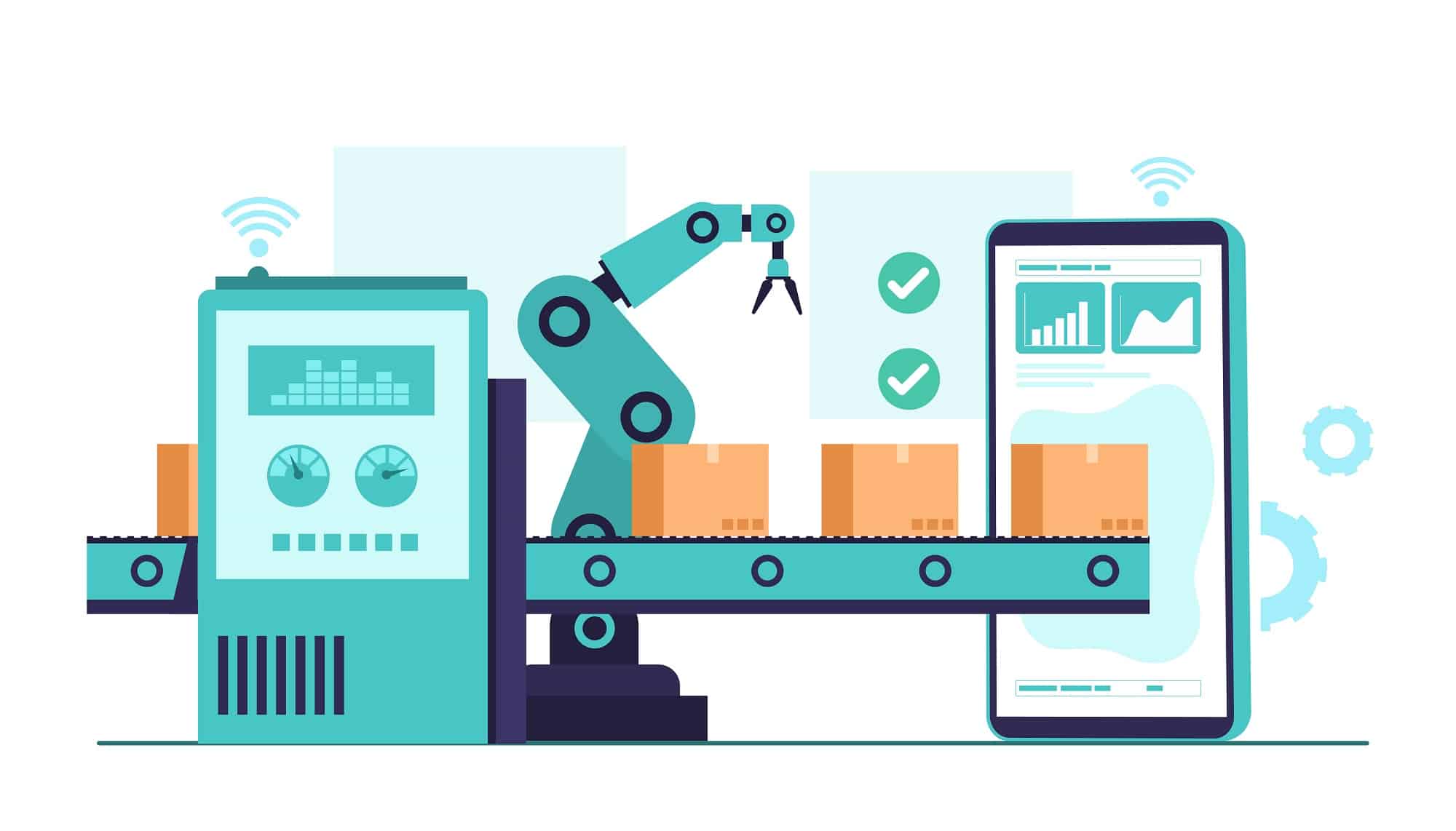To survive post-pandemic, most industries and manufacturing businesses had to make drastic changes to keep up or adapt to the market’s rapidly changing needs. By providing essential tools of connectivity, digital transformation & technologies have enabled businesses to boost operational performance by enabling real-time adjustments to production and remote working. As a result, The Internet of Things (IoT) disrupted industrial technological trends digitally. With the advent of the internet, the decreasing cost of connectivity, and the proliferation of devices with Wi-Fi and sensors, industries can benefit from interconnecting their industrial devices to create smart equipment, machines, processes, service vehicles, and so on.
It is estimated that the global IoT market will be worth $187 billion in 2022, and a compound annual growth rate (CAGR) of 22.9% is expected through 2026.
By combining edge computing, machine learning, cloud computing, and mobile technology, Industrial IoT Solutions Providers can help bridge the gap between legacy industrial infrastructure and modern technologies. Through IIoT, industries can increase efficiency and productivity in their industrial operations.
Let’s have a look at how an Industrial IoT Solution Provider can modernize your factory:
1) Supply-chain Optimization: With industrial IoT, supply chains are faster, more flexible, and more transparent, with manufacturers having full visibility into their incoming and warehoused components. Moreover, networked machines provide real-time feedback on production rates, resulting in more efficient purchasing.
2) Equipment Utilization Monitoring: IIoT facilitates equipment utilization by providing visibility into each machine’s performance. By monitoring equipment utilization, you can see detailed metrics like TEEP, OEE, OTIF, and more.
3) Inventory management: By using industrial IoT solutions, warehouse management can be improved, inventory items can be distributed more efficiently on the shop floor, search times can be reduced, and inventory carrying costs can be reduced. By combining IoT with radio frequency identification (RFID), inventory management becomes more efficient and seamless. Each item in the inventory is fitted with an RFID tag, which contains digital data encoded with a number. RFID readers scan the tags and transmit them to the cloud.
4) Quality Control: As part of the reactive quality control process, manufacturers make products, test them, then hope to find and rectify any flaws before the product reaches the market. Through the use of IIoT in smart factories, this process becomes proactive as thermal and video sensors collect product data at different stages of its life cycle. At each manufacturing step, products can also be tested to ensure they meet specifications. Moreover, instrumentation and monitoring help quality control personnel detect if and where calibration deviations occur from standard settings to avoid misalignment of products.
5) Predictive Maintenance: Through the use of IoT sensors (on the equipment), they can monitor its operating environment and perform analytics on related data in the cloud to evaluate wear and tear. By providing prompt service and repair, the maintenance process is more efficient, field technicians are assigned more work, downtime is reduced, and cost savings are more significant.
6) Employee Monitoring: As part of IIoT solutions, wearable sensors can also help you track and report employees’ locations and health conditions in real-time (e.g., heart rate, body temperature) while working in factories and fields. It helps to understand their exposure to fumes produced in a process, their stress levels, their heart rate, and their general movement. By using the information gathered, business owners can improve their compliance structure and reduce their insurance costs.
7) Smart Metering: By using IIoT, resources can be used more effectively and fewer resources are wasted. The consumption of water, fuel, and electricity is tracked by smart meters. To maximize the efficiency of these resources, they measure how they are being used and propose methods to make them more efficient.
8) Intelligent Product Enhancements: As with other IoT applications, IoT in manufacturing also enhances production quality. In the past, creating products required extensive market research and customer feedback, but with IoT, companies have access to vast amounts of information and data. An IoT system acts as a reliable source of information about any product, resulting in increased profits.
9) Smart Packaging: IoT-enabled smart packaging uses technology to package and store products. This feature allows users to inquire about the product or delivery directly from the package. IIoT and packaging work together by using sensors, QR codes, and other methods. The main objective is to interact with the consumer and collect necessary data.
10) Dynamic Response to Market Demands: Consumer tastes and preferences, income levels, expectations of consumers, and country capital all influence supply to market demands. Research is vital to keeping up with demand, and the current supply may lead to heavy losses for businesses and future decisions. With IoT, information is stored and retrieved continuously with little human intervention required, and it controls supply chains because the information it gathers is generally accurate.
11) Lower costs, Efficient Resource Use, and Less Waste: With IIoT, background checks for products are no longer dependent on humans. In most cases, maintenance checks and tests involve manual labor and take a lot of time. By using sensors and security webcams, an organization can be monitored remotely through IoT. As a result of IoT, human and mineral resources can be managed and optimized, providing cost-effective and feasible solutions to complex issues.
12) Fleet Management: The movement of buses and other shipping vehicles can be tracked using GPS trackers. As a result of IoT, transportation logistics can be streamlined and proactive, allowing bottlenecks to be identified preemptively. The current supply chain issues make fleet management an essential use case for IoT in manufacturing.
Final Thoughts:
IIoT sensors and autonomous machines can provide businesses with valuable insights and generate powerful performance benefits across all industries. However, integration of such devices requires an Industrial IoT Solution Provider, effective training, and coordination among employees.
Are you looking for an Industrial IoT Solution Provider? Sterison combines expertise in technology, process re-engineering, and app development to create tailor-made IIoT solutions that improve efficiency and facilitate industry 4.0 standards.






